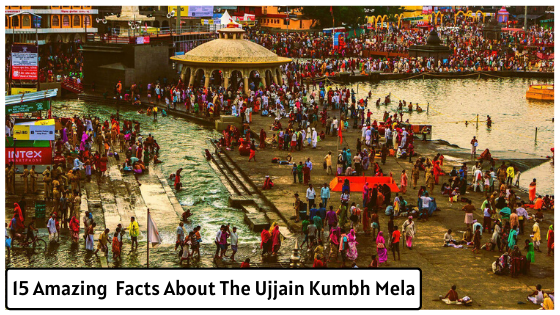
India is a land of hundreds of events and festivals, celebrating the heritage and culture of the country. One such event in question here is the Ujjain Kumbh Mela, Hindu religion’s most significant congregation that witnesses footfalls from across the globe. Such is the charm of this event that when Mark Twain, a popular American author, visited the Mela in 1895, he had this to say:
“It is wonderful, the power of a faith like that, that can make multitudes upon multitudes of the old and weak and the young and frail enter without hesitation or complaint upon such incredible journeys and endure the resultant miseries without repining. It is done in love, or it is done in fear; I do not know which it is. No matter what the impulse is, the act born of it is beyond imagination, marvelous to our kind of people, the cold whites.”
While the Ujjain Kumbh Mela 2028 still has 8 years to go, people are waiting for the same with bated breath. So, as you wait for the colossal event, we present to you 15 facts about the event that will leave you speechless, for sure. Here we go!
If you are wondering what if you visit the Kumbh Mela and fall ill, well, fret not because the medical facilities at the event are managed well and include temporary hospitals, toilets, etc. Police personnel is also available there throughout, to take care of the devotees.
Ever since the inception of the Kumbh Mela, several documentaries have been made on this colossal phenomenon, but as of now, none have been able to beat ‘Short Cut to Nirvana: Kumbh Mela’ by Nick Day.
Kumbh Mela is considered to be important in the Hindu religion as it is believed that the pilgrims who take a dip in the holy waters during this mela, they get liberated from the incarnation cycle, also known as Moksha.
Do you ever wonder why the Ujjain Kumbh takes place every 12 years? That is because, as per the legend, one single day and night of the heaven make for 1 human year, and since the epic battle between the gods and the demons continued for 12 days and nights, this event is celebrated every 12 years.
Among the countless number of people who attend the Kumbh Mela, there also are different types of hermits like – the Kalpvasis (sadhus who take bath three times a day), Shirshasins (another type of saints who keep standing 24-hours a day and meditate standing on their heads for hours), Parivrajakas (who never speak), Urdhwavahurs (sadhus who put their body through intense austerities), and Nagas (who never wear clothes).
Although nobody knows as to when was the first time the Kumbh Mela was organized, but the first evidence of it came from Xuanzang or Hiuen Tsang’s accounts. For the unversed, he was a traveler based out of China, who came to India between 629 and 645 A.D., when King Harshavardhana was ruling the country.
Kumbh Mela takes place every 3 years on a rotational basis in Ujjain, Haridwar, Nashik, and Allahabad, which are considered to be the holy cities of India.
The Ujjain Kumbh Mela is one mammoth of an event that is witnessed by nearly 80-100 million people from across the globe.
Known as the biggest spiritual fair, the Ujjain Kumbh Mela is listed at the major gathering in the world of humanity.
The dates of the mela are decided according to the Moon, Sun and Jupiter's zodiac positioning. It is said that, during the Kumbh Mela, the water of the holy rivers turns into an elixir.
Ahead of the Kumbh Mela, a report suggests, over 60 thousand jobs are created, directly or indirectly for the management of this larger-than-life event.
Released in 1982 and directed by the very popular filmmaker, Dilip Roy, one of the renowned Bengali films, Amrita Kumber Sandhane also documented the grandeur of the Ujjain Kumbh Mela.
This Kumbh Mela is considered to be quite special, courtesy the Mahakaal Jyotirlinga that is situated there. According to the Puranas, Ujjain is one of the 7 Moksha Dayini pilgrimage cities. What further increases its holiness is the fact that it is also home to Siddhvat and one of the holy Shaktipeeths.
Out of all the 4 cities where the Kumbh takes place – Ujjain, Prayagraj, Haridwar, and Nashik, Prayagraj is the oldest to be hosting it.
The first bath at the Kumbh Mela is at 3 in the morning which is known as the ‘Shahi Snan’ which can be taken only by the sadhus. It is only after they are done, that common people get a chance to take a dip in the holy waters.
So, those were the most important facts of the Kumbh Mela. To know more about this event and others, visit our website, Adotrip, a one-stop solution for all the travel-related queries.